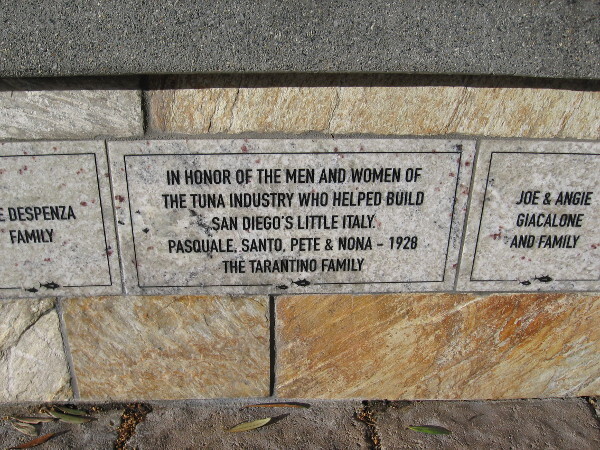San Diego
San Diego’s Little Italy has undergone a huge transformation since its origins when Italian tuna fishermen established the community in the 1920s. Once home to over 6,000 Italian families in the thriving tuna industry, the neighborhood expanded into forty-eight square blocks and became a stable ethnic business and residential area. However, with the decline of the tuna industry and the construction of the I-5 freeway, caused the neighborhood to suffer. The construction of the freeway which led to the destruction of 35% of Little Italy. In the 1990s, local property owners and business leaders took action, and the Little Italy Association (LIA) was formed to build up the area. Over the past two decades, Little Italy San Diego has transformed into the largest Little Italy in the United States and one of Southern California’s most dynamic urban districts, attracting both locals and tourists. The LIA is focused on enhancing the neighborhood through cultural events, new businesses, and residential expansions. LIA’s signature events, like the Taste of Little Italy, Little Italy Summer Film Festival, and the Little Italy Tree Lighting, bring thousands of visitors each year. The big main event however is the annual festa.
Little Italy in San Diego has a rich history that began in the late 1800s when Italian immigrants settled near the waterfront, looking for work in fishing, shipping, and agriculture. The area became a hub for Italian businesses, including cafes, butcher shops, and St. Joseph’s Church, all serving as community centers. By the early 1900s, Little Italy was a thriving Italian American neighborhood, but after World War II, many residents moved away as the city expanded, leading to an urban decline. “The government moved Italian-American noncitizens a few blocks from waterfronts, steel companies, and other production facilities” (Laurino 188). In the 1980s, revitalization efforts began, driven by new development, and a renewed focus on preserving the neighborhood’s Italian heritage. This revival saw the restoration of historic buildings, the creation of cultural events like the Festa of Little Italy, and the growth of restaurants and other spaces. Today, Little Italy San Diego is a vibrant, modern district known for its restaurants, art galleries, and high-rise condos, while still celebrating its Italian roots through festivals and landmarks like the Little Italy Arch and St. Joseph’s Church. The neighborhood’s transformation, led by the LIA, has made it one of San Diego’s most desirable areas to live, work, and visit. The architecture of Little Italy in San Diego blends historic charm with modern innovation, reflecting both its Italian heritage and the transformation into a vibrant urban district. Older buildings feature Italianate and Mediterranean Revival styles, with stucco facades, arched windows, and red-tiled roofs. These are often contrasted by modern designs in newer residential and commercial developments. Public spaces like the Piazza della Famiglia and landmarks such as the Little Italy Arch combine modern elements with traditional Italian designs, creating a blend of old fashioned charm and urbanism. Throughout the neighborhood, Italian-inspired design touches reflect the district's roots, while also embracing the growing diversity of the area. Little Italy’s architecture harmoniously combines the historical and the modern, offering a vibrant and dynamic space that showcases both Italian culture and the evolving character of San Diego.
The assimilation of Italian Americans in San Diego mirrors broader patterns seen across California, but with unique local factors that shaped their experience. The early Italian American community in San Diego was concentrated in areas such as Little Italy. Like other Italian enclaves, Little Italy served as a hub for maintaining cultural traditions, including Italian language, food, and festivals. As Italian Americans settled in San Diego, they faced the challenges of discrimination and the pressures of assimilation. “They wanted their children to understand they were part of an ethnic group and they did that in reaction to the mass assimilation going on… they didn’t wanna lose their sense of being. Their sense of being Sicilian and naturally part of Sicilian Italian tradition are the festas. It was beautiful” (Italian-Americans in California 56:56-57:28). The post-World War II period marked a shift as Italian Americans, many of whom had served in the military, integrated into the middle class and diversified into white-collar professions such as law, education, and business. Today, Italian Americans in San Diego continue to celebrate their heritage. While assimilation into the broader social and economic fabric of the city is largely complete, the Italian American community in San Diego remains a key part of the city's diverse cultural mosaic, preserving traditions while contributing to the city's development.
